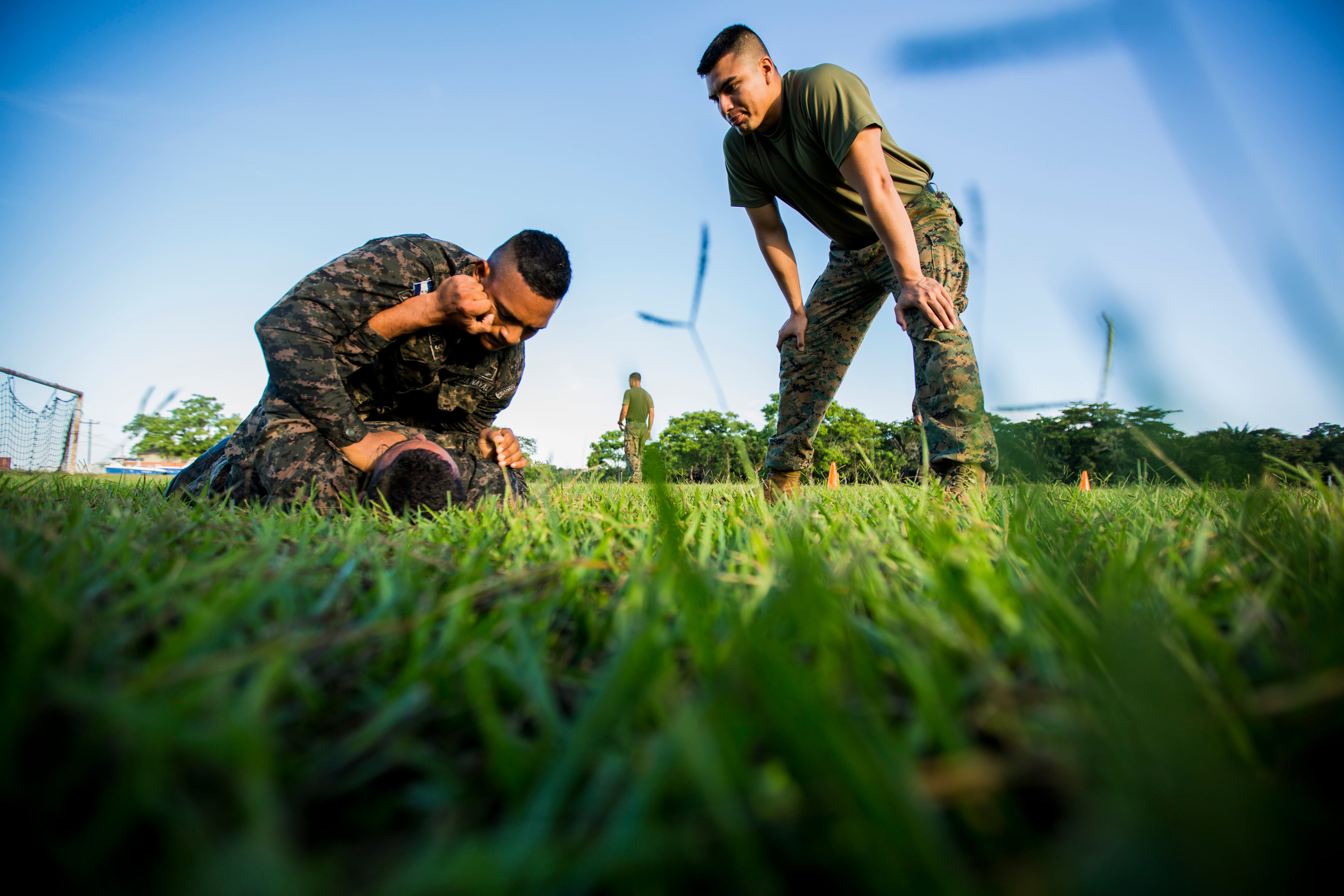Just months after the start of a historic first deployment, the Marines' task force for Central and South America[[Hope, I think this is just CENTAM? GH]] is already preparing for its next rotation.
Brig. Gen. Eric Smith, the commander of Marine Corps Forces South, told Marine Corps Times that future iterations of Special-Purpose Marine Air-Ground Task Force–South, which currently operates in Honduras, Guatemala, El Salvador and Belize, will ould be led by Reserve units. The move an arrangement that will lend consistency to the deployment schedule and allow reservists to put their specialized Marines with special skills to put them to work.
"The broad plan is they'll rotate among three infantry regiments," Smith said, adding that future following deployments would be built around headquarters elements from 23rd, 24th or 25th Marines. "For us, that's great, because it's a repeatable, dependable partner."
The units that will be part of that next rotation have yet to be identified, he said.
Because many Marine reservists have civilian jobs in other specialized fields in addition to their military duties, Smith said the task force will ould also benefit from their expertise.
"In our [area of operations], Spanish speakers are a premium, so we’re very fortunate that we have a good number of Spanish speakers in our Rreserves," he said. "And many of the Marines have civilian jobs, law enforcement jobs, which we think we can blend very well with our partner nations who are in many cases struggling with violence, struggling with gang problems, and they are using police in civil police unions to try to protect the people."
About 280 Marines with the The 300-Marine unit first deployed to its current base in Honduras in June. Since then, Smith said, the task force has sent small theater security cooperation teams out to four countries and embarked on a number of infrastructure projects at the behest of partner nations. Perhaps most significantly, a detachment of Marine engineers from the task force improved an airfield in Mocoron, Honduras, making it wider and stabilizing it so that it could accommodate larger aircraft.
Projects like that, Smith said, are an example of the sort of mutually beneficial opportunities for the U.S. and partner militaries, Smith said. that task force officials hope to focus on. The airfield improvements will , he said, would allow the Honduran military to transport troops and supplies more securely via air, he said, rather than hauling people and gear by barge around the coastline. Meanwhile, he added said, Marines assisting with the project were able to improve their skills. took advantage of the opportunity to build real-world skills.
"We get the engineering work out of it, because where else do you get to refurbish an airfield?" he said.
When the task force again deploys to the region next spring during the six-month hurricane season, Smith said he hopes to better use the CH-53 Super Stallion helicopters attached to the unit. That could help cut, cutting down the time between fielding requests from partner nations and responding , and eliminating procedural red tape that might slow down crisis response in the event of a natural disaster.
It's possible the unit may also move from its current location at Soto Cano Air Base, Honduras, to another Central American location in the coming year. Any change would be at the request and behest of partner nations and with their with the cooperation of the host nation, MARFORSOUTH officials said; the way forward may be clearer by October.
"I’m not at all concerned about where [the task force] goes as long as where it is, is is suitable to launch operations from," Smith said.

Marine Capt. Juan Diaz, right, the officer in charge of Security Cooperation Team-Honduras, Special-Purpose Marine Air-Ground Task Force-Southern Command, monitors Honduran marines participating in the Honduran martial arts program at Naval Base Puerto Castilla on Aug. 17.
Photo Credit: Cpl. Katelyn Hunter/Marine Corps
For all of MARFORSOUTH, Smith said his the command will ould focus on building on improving and excelling at existing partner training exercises, rather than adding new ones in the coming year. The schedule for 2016 will include several annual Navy-Marine exercises: Tradewinds, Partnership of the Americas PANAMAX and Unitas, all multilateral training efforts involving Navy and Marine Corps assets.
Meanwhile, Smith, who became MARFORSOUTH's the first full-time dedicated commander in of MARFORSOUTH at the end of June, said he is midway through a tour of the nations in the region. With visits to Belize, El Salvador, Colombia and Honduras complete under his belt, he's now said he planning stops in next to visit Guatemala, Chile and Peru. In each country, he meets with military leaders counterparts to discuss the role of Marines in the region and plan out mutually beneficial projects the nations can undertake together in the future.
"Let’s have an 'EeHarmony' match where we can, and if we don’t agree on something, let’s move on to where we do agree on something," he said. " We’re ...just a member of the Western Hemisphere, and we really try hard to make them understand that that’s how we feel."




